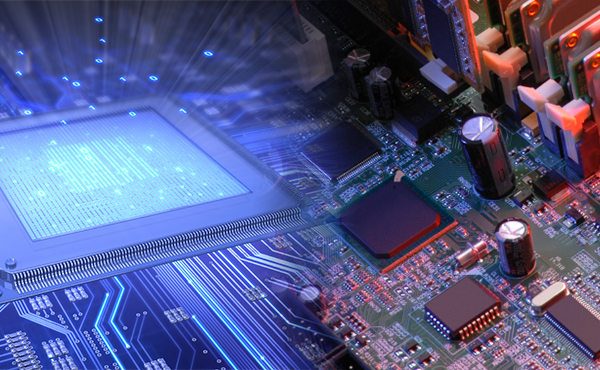- Home
- Symmetry Blog
- System-on-Chip vs Single-Board Computer
System-on-Chip vs Single-Board Computer: A Comparison Guide
Wednesday, July 1, 2015

With new products, technologies, and standards being released every day, companies are constantly under pressure to keep up. They are racing to the market with the smallest and fastest product. One common question we see come up in engineering meetings is whether a customer should choose a System on Chip (SoC) or a Single Board Computer (SBC) for their design, and all the trade-offs of that decision. There are so many pros and cons to each that there is no easy answer.
This article discusses the factors you need to consider before making a design decision on SoC vs SBC.
What is a System on Chip (SoC)?
As the name suggests, a SoC integrates a lot of system components into a single silicon chip. Along with an application processor, a SoC typically contains memory, power management circuits, and a range of peripherals such as SPI, UART, I2C, USB, SATA, PCI, and PCIe, etc. Additionally, depending on the focus and expertise of the vendor, there is often a core dedicated for special functions. For example, Fujitsu offers ARM-based SoCs with 2D/3D graphic display controller cores, GainSpan offers Wifi SoCs, and AMD offers the world’s first X86-based SoC.
Pros and Cons of Using a SoC
The goal of using a SoC in a design is to be able to build a complete system with a single chip and minimal external components. So why wouldn’t everyone use one? Let’s look at both sides of the coin.
Why use a SoC in your design?
- Size – You get a LOT of functions and features in a small package
- Flexibility – In terms of board size, form factor, and power, it’s hard to beat the flexibility that a SoC allows in a design
- Cost efficient – This is especially true for application-specific SoCs such as video codecs, since the alternative is to implement it in software, which can be costly in terms of time and effort
- High volume – SoCs are great if you have a high volume product since it makes it easier to justify the engineering resources and cost
Why not use a SoC?
- Time to market – Design cycles are typically between 6-12 months for a SoC
- Resource limitations – If you are limited in resources or if you don’t have too much expertise in the field, a SoC is probably not a good fit
- Lower volume – If you are designing a low volume/high margin type of product, there may be alternatives (see below) that are more suitable, unless you need a highly specialized hardware. You may be better off leveraging hardware from someone else and utilizing your time and resources for application software
What is a Single Board Computer (SBC)?
A single board computer is a complete system/computer built on a single printed circuit board. They are simple and easy to design in. All you have to do is add your secret sauce on the board or integrate it in a bigger system to make it yours. SBCs are a great fit for customers who need to get their product to market quickly. There are wide range of boards available today, ranging from the traditional ATX/BTX (Advanced Technology Extended/Balanced Technology Extended) to COM (Computer on Module) which measures 58mmx65mm. SBC manufacturers often offer customization for very little or no non-recurring engineering costs. Here are some of the pros and cons of using a SBC.
Pros and Cons of Using a SBC
Why use a SBC in your design?
- Easy to use – skip the hundreds of pages of design rule checking (DRC) documents and layout guidelines of the SoCs
- Proven hardware – Making one simple mistake in a SoC board design can be very expensive. Boards reduce this risk
- Customizable – Ability to customize a board means you are paying for exactly what you need
- Single source – BOM of a simple SoC board can still be in the 100s. SBC makes it easy for logistics
- Time to Market – Much faster design cycle than for a SoC
Why not use a SBC?
- Cost – If your product is in the high volume category, then it may make more sense to do your own design and justify the engineering costs
- Flexibility – If you need a lot of customization on a given SBC, it will be worthwhile to consider doing a SoC design
- Knowledge – If you plan to use the same/similar SoC for multiple products, then investing the time and effort to develop deep understanding of the product is worth it
Is There an In-Between Option?
Yes! If a SoC is too complex and a SBC is too generic, there may be another choice: a module. For example, Videon offers semi-custom modules based on Fujitsu processors for 1080p Encode and Transcode applications. This is a great alternative to use when you don’t want to compromise on the custom features, but want to get a product out relatively quickly. You end up leveraging the knowledge, expertise, and the time invested on developing a SoC by a design house.
If you are still conflicted on the right choice for your design, call Symmetry Electronics at (310) 536-6190, or contact us online.